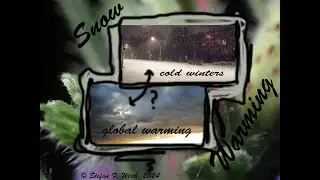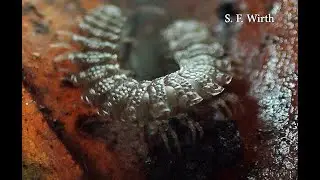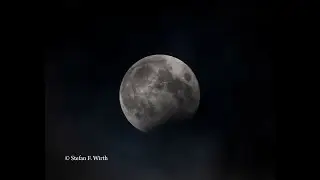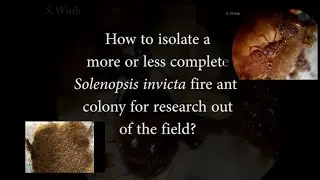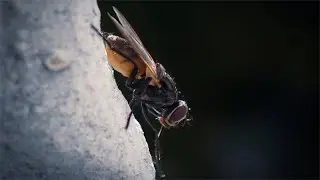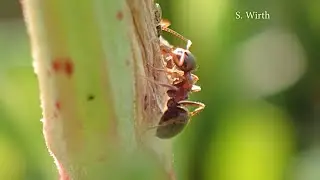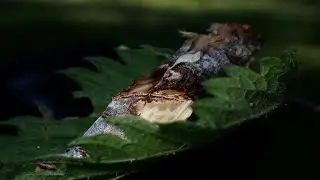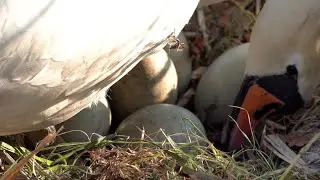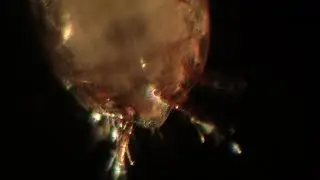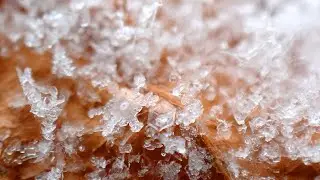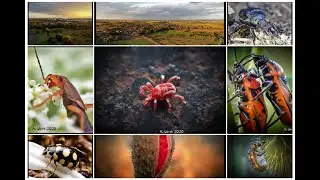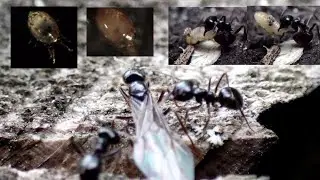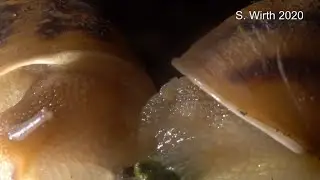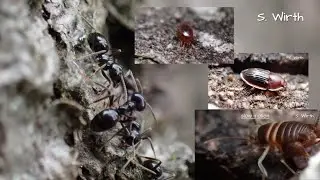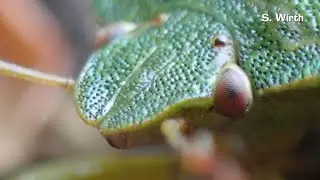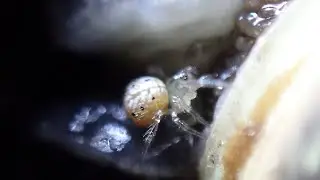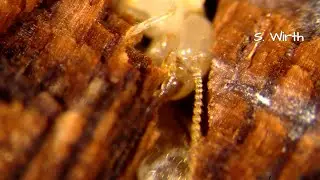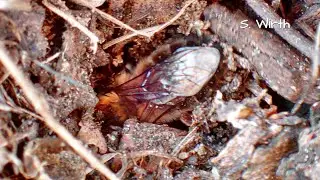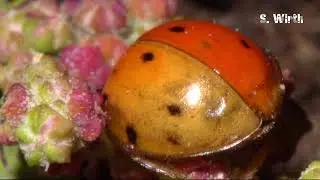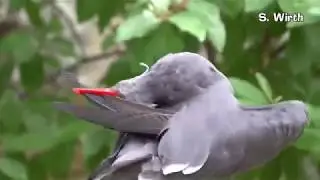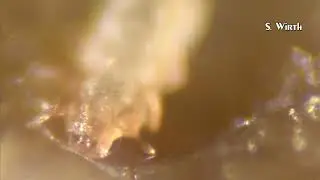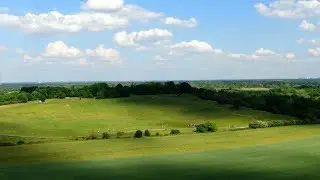Linyphiid spider visits much bigger snail and bites into mucus
During a photo shooting with a specimen of the snail Arianta arbustorum in an evening outdoors in urban park Rehberge in Berlin with artificial light from an extra lamp and camera LED light, a tiny spider of Linyphiidae (seemingly Bolyphantes sp., may be still a juvenile, or may be Enoplognatha ovata (Theridiidae), according to a user's determination) appeared unexpectedly and walked seemingly targeted to the snail's head, which was partly retracted into its shell, and stayed there for about 3 minutes, biting repeatedly into the snail's mucus and remained subsequently each time for seconds in that position.
In between it skillfully and repeatedly rearranged the positions of its legs, presumably to be not in danger to remain stuck. While doing so, it sometimes lifted legs, when not needed, in the air, may be to reduce that way the probability to remain stuck. After about 3 minutes the spider left its position around the snail-head mucus and walked partly sidewards to the top of the shell, where it carefully cleaned its legs from remaining mucus.
Due to the difficult light conditions and the unexpected spider visit, I was in this short time unable to move the camera closer to the spider (would have been technically possible, when more time and more light). Thus-close-ups with a high magnification in my video were only due to digital magnifications out of the original 4K footage. Only one biting action could be clearly documented as video file. The same short scene is in my video three times repeated to exemplify that behavior. The last repetition is additionally modified into slow motion. There was furthermore no video footage of legs adjusted in the air. Thus the corresponding short scene is one of numerous photos, which I captured before filming.
It is unknown to me, what the purpose of the spider's behavior was. I also did so far not find any scientific publication mentioning tiny spiders visiting much bigger snails on purpose. It looked to me as if the spider would incorporate mucus or moisture or other components excreted by the snail.
I do not know, whether such a spider behavior happens regularly or at least occasionally, as I only have this one observation. I would exclude the possibility that the spider was disturbed by my photo activities in its web may be in the adjacent meadow, tried to flee and accidentally landed on the snail and just observed this unusual surrounding with its mouthparts. All looked too much like a targeted behavior with even specific behavioral adaptations.
There is generally not much known about spider and snail interactions. The scientists Nyffeler and Symondson (Bern, Switzerland) published in 2001 about malacophagy in the sense of gastropod feeding by spiders (Ecological Entomology 26). But that paper deals about bigger and even big spiders feeding on snails of adequate size, which is unlike the size relations in my observed case.
It is not trivial for a spider to incorporate anything from snail mucus, as this very sticky slime acts besides other functions as defense mechanism for the gastropod. In that context the above mentioned authors cite Tretzel (1961) by mentioning that mucus production of gastropods seems to have no deterring effect on some spiders. The question then is the efficiency of spider enzymes against snail tissue, a topic, about which I did not do more literature research.
According to the above mentioned authors, moisture can in malacophagous spiders be an important factor, as gastropod bodies consist to a high percentage of water. They refer to Lain (1982), who published about New Zealand mygalomorph spiders.
In the case of my observation it would eventually be of interest, referring to the context above, that also gastropod mucus contains a high water percentage.
More observations such as mine would be needed to find out, whether the behavior of the linyphiid spider on a much bigger slug is a specific behavior or not.
Berlin, May 2020, urban park Rehberge, copyrights Stefan F. Wirth
Смотрите видео Linyphiid spider visits much bigger snail and bites into mucus онлайн, длительностью часов минут секунд в хорошем качестве, которое загружено на канал Stefan F. Wirth 10 Май 2020. Делитесь ссылкой на видео в социальных сетях, чтобы ваши подписчики и друзья так же посмотрели это видео. Данный видеоклип посмотрели 509 раз и оно понравилось 7 посетителям.






![Drake - Club Paradise [Extended]](https://images.reviewsvideo.ru/videos/OuFh_a9qcwg)


